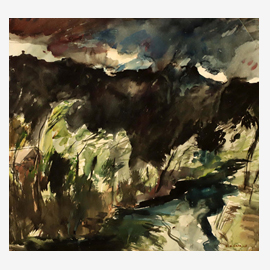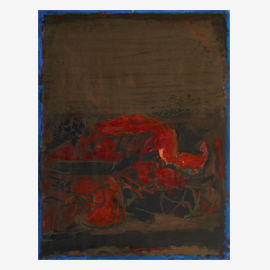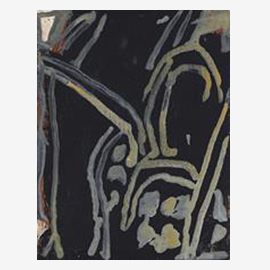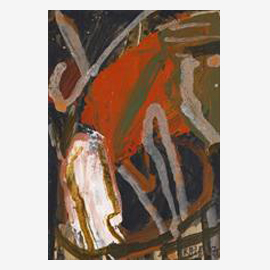Sayed Haider Raza was born in 1922 in Babaria district of Madhya Pradesh. He studied painting at the Nagpur School of Art from 1939 to 43. He further continued his studies at the J.J. School of Art in Mumbai from 1943 to 1947 and subsequently at Ecole des Beaux Arts in Paris from 1950-53, on a French government scholarship.
One of the most iconic artists in the history of modern Indian art, S.H. Raza is known the world over for creating the unique icon culture of the ‘Bindu’, a point of origin, a point of synthesis, embodying a deep-seated spiritual consciousness as it were.
Raza gradually evolved from painting expressionistic landscapes to abstract ones and from his fluent watercolours of landscapes and townscapes executed in the early 40's, he moved...
Sayed Haider Raza was born in 1922 in Babaria district of Madhya Pradesh. He studied painting at the Nagpur School of Art from 1939 to 43. He further continued his studies at the J.J. School of Art in Mumbai from 1943 to 1947 and subsequently at Ecole des Beaux Arts in Paris from 1950-53, on a French government scholarship.
One of the most iconic artists in the history of modern Indian art, S.H. Raza is known the world over for creating the unique icon culture of the ‘Bindu’, a point of origin, a point of synthesis, embodying a deep-seated spiritual consciousness as it were.
Raza gradually evolved from painting expressionistic landscapes to abstract ones and from his fluent watercolours of landscapes and townscapes executed in the early 40's, he moved towards a more expressive language, painting landscapes of the mind. He later moved onto the idiom of geometric abstraction, specifically his Bindu series. His experiments were influenced by the new medium of acrylic, with which he began his new approach and experiments on canvas.
Raza was one of the first people to have such a strong influence on the Landscape art of India. Lately though quite a few people have been practicing symbolic art, it was Raza who had immortalized this art genre though his Bindu series. Raza’s symbolic work was rooted in great conceptualization. His conceptualization of the Bindu series drew roots and inspiration from philosophy, mythology, literature, etc. It is in this eclectic synthesis of philosophy and art that Raza’s greatness laid.




